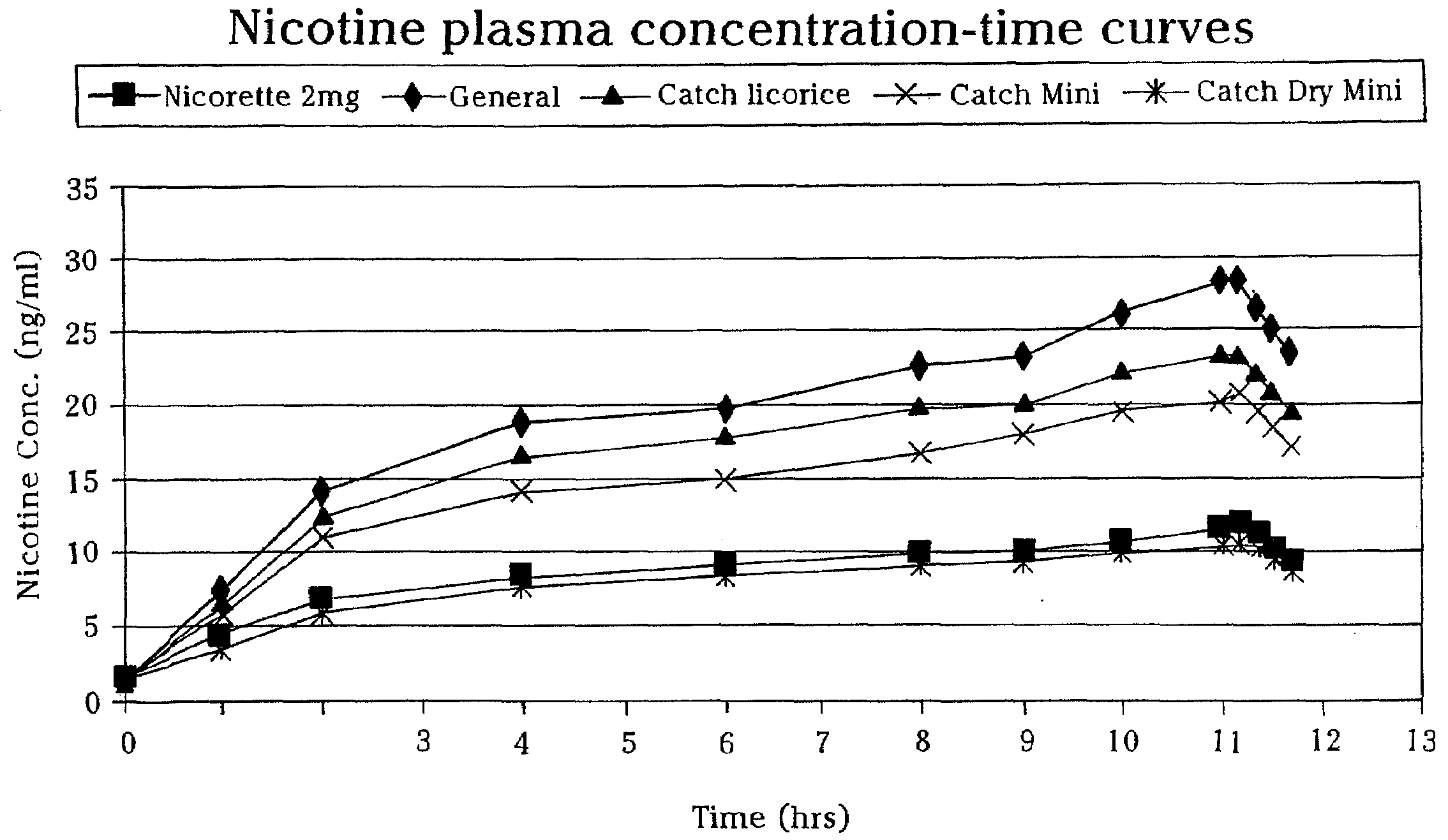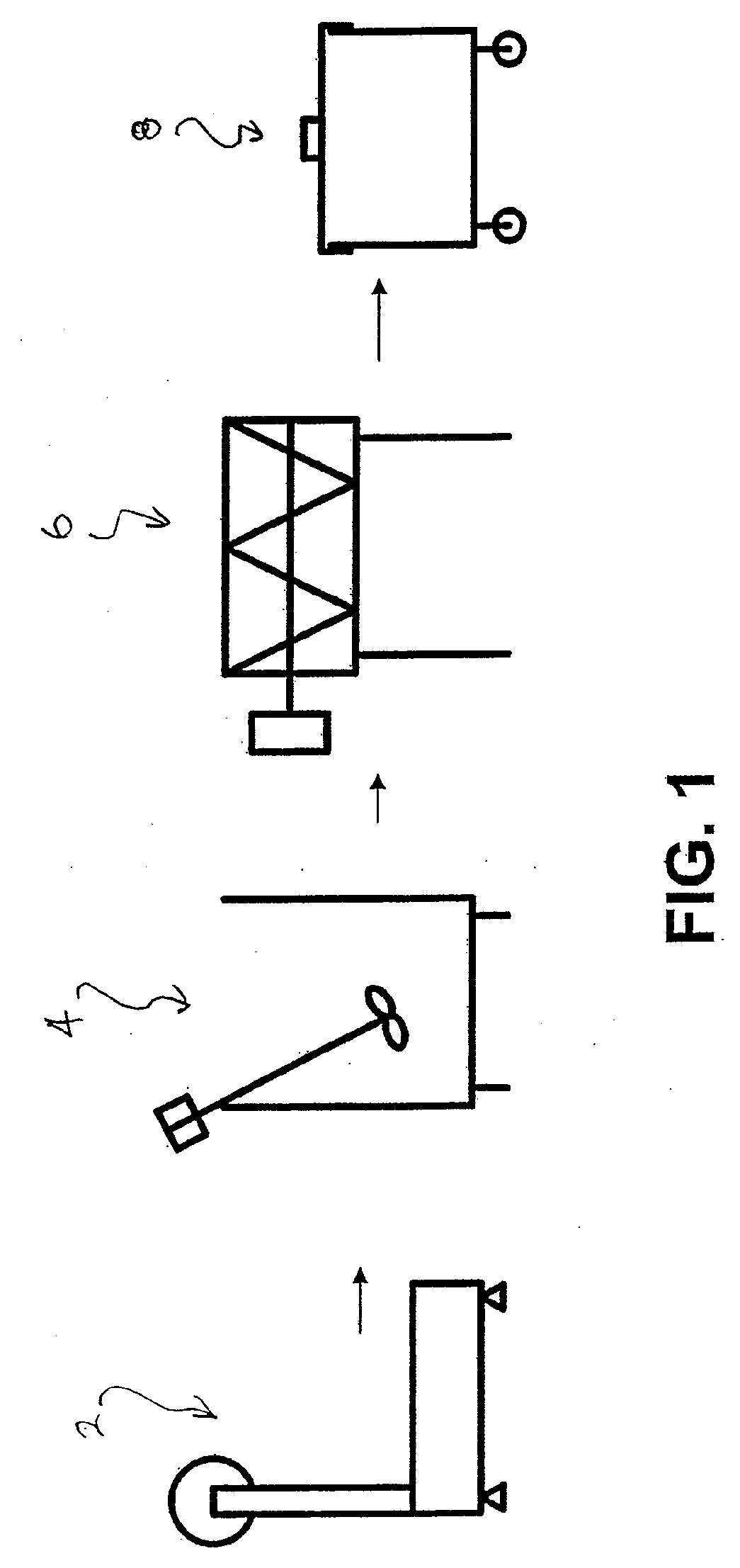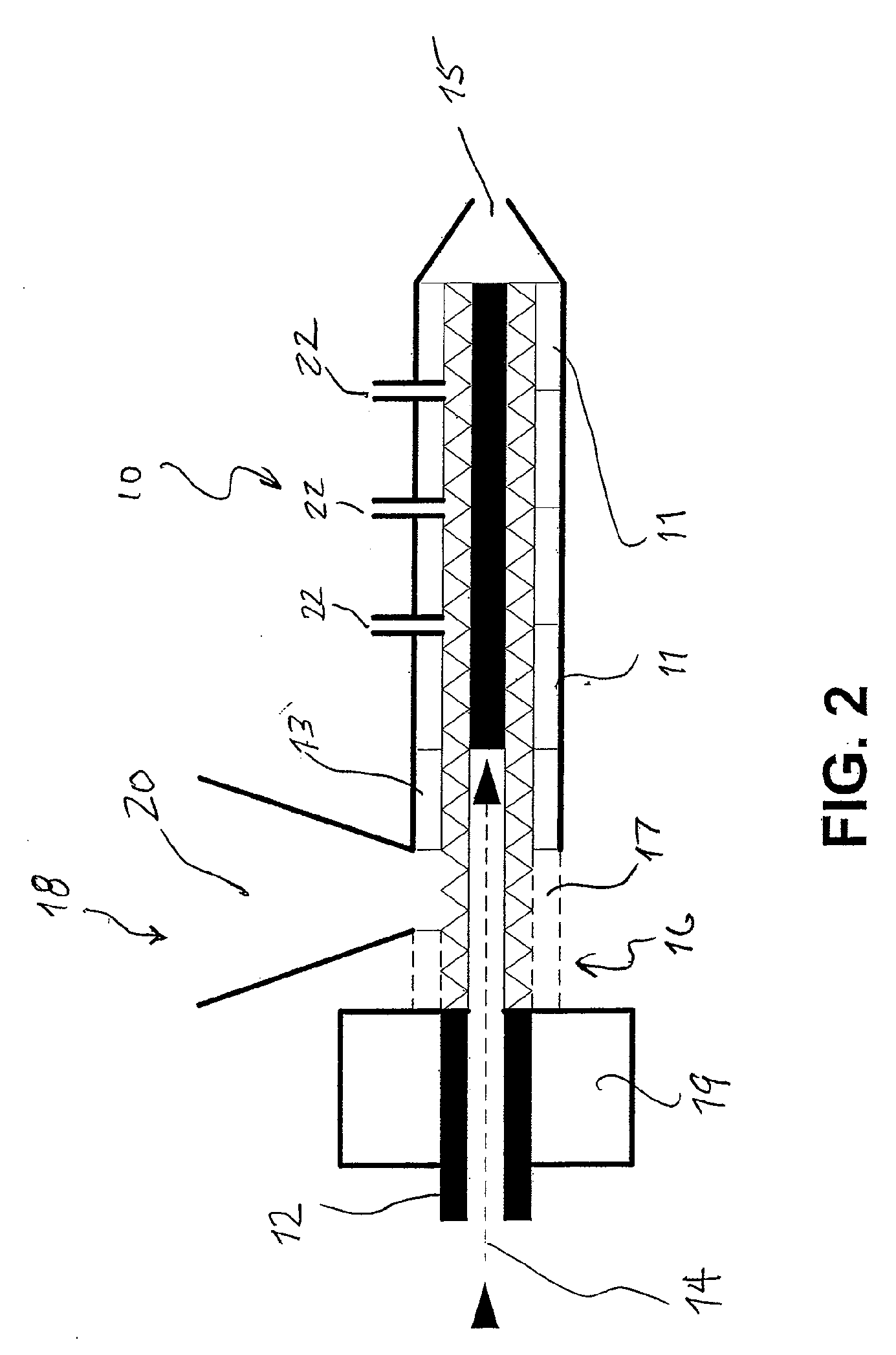Extrudable and Extruded Compositions for Delivery of Bioactive Agents, Method of Making Same and Method of Using Same
a bioactive agent and composition technology, applied in the direction of granular delivery, chewing gum, medical preparations, etc., can solve the problems of limited loading, limited thickness, and inability of wet casting process to practically deal with very high viscosity, and achieve the effect of sustained release of bioactives
- Summary
- Abstract
- Description
- Claims
- Application Information
AI Technical Summary
Benefits of technology
Problems solved by technology
Method used
Image
Examples
example a
[0142]The following ingredients were mixed in a dry blend, using multiple batches in a Hamilton 8 cup Hamilton Beach / Cuisinart style food processor for a total quantity of 10 kg's.
Ingredient%SupplierHPC LF58.75Aqualon (Hercules)Propylene Glycol FCC,3SpectrumNFXylitol NF5.25RoquetteBitter Masker2UngererSucralose2Tate & LyleSnuff25BrutonPeppermint Flavor2UngererTiO22DNP InternationalTotal100
[0143]The dry blend was fed into a single screw extruder (L / D ration 36) with rpm set at 180 and a barrel temperature set at 230 F. for the initial zone and 300 F. for subsequent zones and the slot die. The extruder was fed at a rate of 7 kg of material per hour. The liquid base of the flavor was vented from the extruder. The slot die was set at 30 mils. The slot die had a width of ten inches. The sheet was extruded with the take off rollers and showed a thickness of 13 mils and was rolled onto a roller without the use of any backing materials. Residence time of the material in the extruder was app...
example b
[0145]The following ingredients were mixed in a dry blend, using multiple batches in a Hamilton 8 cup Hamilton Beach / Cuisinart style food processor for a total quantity of 3 kgs.
Ingredient%SupplierHPC ELF56Aqualon (Hercules)Xylitol NF5.5Roquette MaltisorbP200Bitter Masker3UngererSucralose2.5Tate & LyleDextromethorphan-ion11.25Cambrexexchange resinate(46.9%Dextromethorphan / 53.1%Polacrilex Resin)Ca Silicate6J M HuberCa Co311Specialty MineralsCherry Flavor2UngererRed.75Keystone Red # 40TiO22DNP InternationalTotal100
[0146]The dry blend was fed into a single screw extruder (L / D ration 36) with rpm set at 180 and a barrel temperature set at 160 F. for the initial zone and subsequent zones and the slot die increasing to 240 F. The extruder was fed at a rate of 7 kg of material per hour. The liquid base of the flavor was vented from the extruder. The slot die was set at 30 mils. The slot die had a width of ten inches. The sheet was extruded with the take off rollers and showed a thickness o...
example c
[0149]The following ingredients were mixed in a dry blend, using multiple batches in a Hamilton 8 cup Hamilton Beach / Cuisinart style food processor for a total quantity of 4 kgs
Ingredient%SupplierHPC ELF54Aqualon (Hercules)Xylitol NF5Roquette MaltisorbP200Bitter Masker1.5UngererSucralose2Tate & LylePhenylephrine-ion16Cambrexexchange resinate(41.4%Phenylephrine / 51.6%Sodium PolystyreneSulfonate resin)Ca Silicate4J M HuberCa Co311Specialty MineralsPeppermint1.5UngererTiO22DNP InternationalTotal100
[0150]The dry blend was fed into a single screw extruder (L / D ration 36) with rpm set at 180 and a barrel temperature set at 160 F for the initial zone and subsequent zones and the slot die increasing to a maximum of 240 F. The extruder was fed at a rate of 7 kg of material per hour. The liquid base of the flavor was vented from the extruder. The slot die was set at 30 mils. The slot die had a width of ten inches. The sheet was extruded with the take off rollers and showed a thickness of 16 mi...
PUM
| Property | Measurement | Unit |
|---|---|---|
| pH | aaaaa | aaaaa |
| pH | aaaaa | aaaaa |
| thickness | aaaaa | aaaaa |
Abstract
Description
Claims
Application Information
 Login to View More
Login to View More - R&D
- Intellectual Property
- Life Sciences
- Materials
- Tech Scout
- Unparalleled Data Quality
- Higher Quality Content
- 60% Fewer Hallucinations
Browse by: Latest US Patents, China's latest patents, Technical Efficacy Thesaurus, Application Domain, Technology Topic, Popular Technical Reports.
© 2025 PatSnap. All rights reserved.Legal|Privacy policy|Modern Slavery Act Transparency Statement|Sitemap|About US| Contact US: help@patsnap.com



